Achievements of ISRO in 2023: The year 2023 marked a historic and landmark period for the Indian Space Research Organisation (ISRO), with notable achievements and remarkable milestones.
Chandrayaan-3 made history by successfully executing a soft landing on the Moon’s south pole on August 23. This achievement not only established India as the first country to accomplish a soft landing at the lunar south pole but also positioned it as the fourth nation to achieve this feat, following the United States, the Soviet Union, and China.
ISRO’s journey of accomplishments extended beyond lunar exploration. The organization celebrated significant milestones, including being the first nation to reach the Moon’s south pole and launching a spacecraft dedicated to studying the Sun. The successful soft landing of Chandrayaan-3 on the lunar surface set a new record, showcasing India’s prowess in space exploration.
Let us see the details of the achievements of ISRO in 2023:
1. Chandrayaan-3
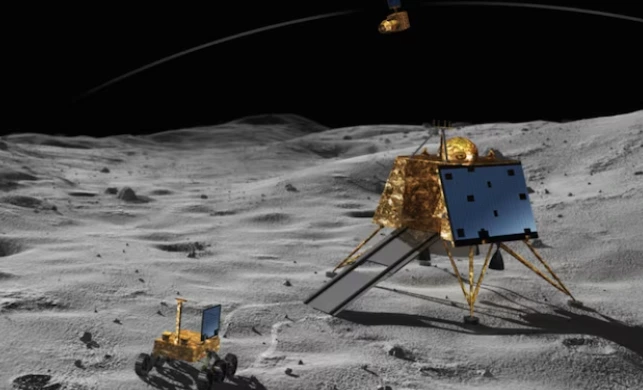
Discovering Lunar Secrets and Venturing into New Frontiers
In a significant leap forward, the Indian Space Research Organisation (ISRO) achieved groundbreaking milestones with its third lunar exploration mission, Chandrayaan-3. Launched on July 14, Friday, at approximately 2:35 pm, the spacecraft embarked on its journey to the Moon with ISRO’s largest and heaviest rocket, LVM3, from the Satish Dhawan Space Centre in Sriharikota, Andhra Pradesh.
The pinnacle of success came on August 23, Wednesday, as Chandrayaan-3 accomplished a successful soft landing on the Moon’s south pole. This achievement not only marked India as the first nation to softly land a spacecraft on the lunar south pole but also positioned it as the fourth country to achieve a soft lunar landing, following the United States, the Soviet Union, and China.
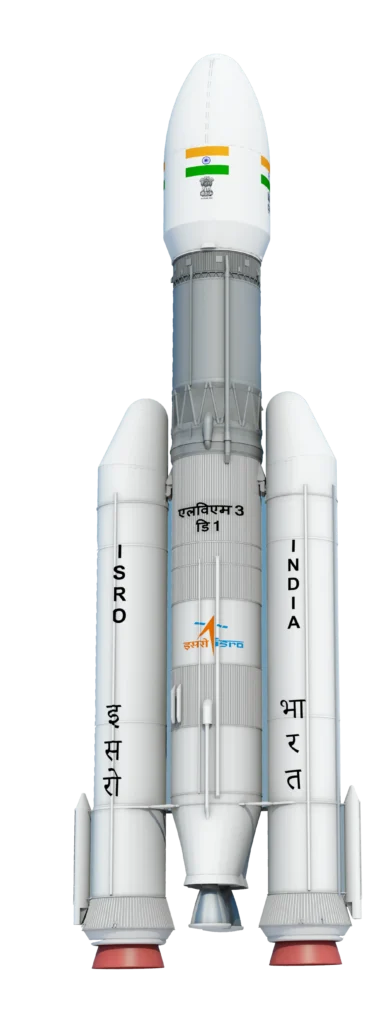
Unlocking Lunar Mysteries
The lunar south pole is of immense scientific interest due to its similarity to Earth’s diverse environments. This exploration provides valuable insights into Earth’s ancient conditions and the potential for lunar colonization in the future. Scientists believe that water-ice reserves, particularly beneath the lunar poles, hold significant scientific value, prompting space agencies to focus on polar exploration.
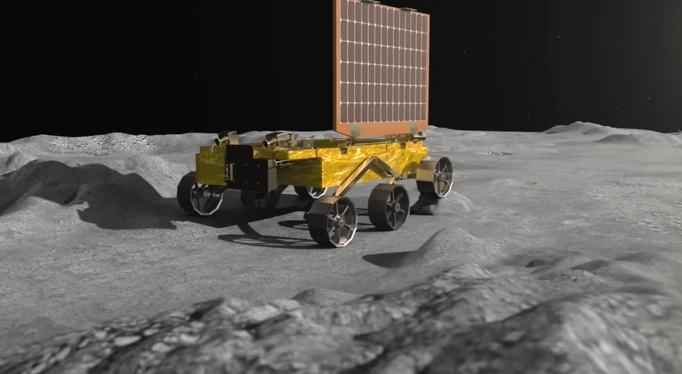
Chandrayaan-1’s Moon Impact Probe hinted at the presence of water molecules beneath the Moon’s crust, motivating further exploration. A soft landing on the lunar south pole allows spacecraft to conduct experiments on the ice, paving the way for potential extraction of water, oxygen, and fuel for future manned lunar missions.
Scientific Achievements in Lunar Research
The Vikram lander and Pragyan rover, integral components of Chandrayaan-3, made rapid strides in scientific discovery within a week of commencing operations on the Moon. Vikram’s payloads included the Chandra’s Surface Thermophysical Experiment (ChaSTE), Instrument for Lunar Seismic Activity (ILSA), Radio Anatomy of Moon Bound Hypersensitive ionosphere, Atmosphere-Langmuir Probe (RAMBHA-LP), and the Laser Retroreflector Array (LRA), developed by NASA. Pragyan’s payloads, the Alpha Particle X-ray Spectrometer (APXS) and Laser Induced Breakdown Spectroscope (LIBS), confirmed the presence of sulphur on the Moon.

Significant accomplishments were made by Vikram and Pragyan, including creating the first temperature-depth profile on the Moon’s south pole, verifying the existence of sulphur, and carrying out research on the lunar plasma environment. Regretfully, because of the intense cold during moon nights that affected the batteries, their operations had to stop in early September. The mission ended after Vikram and Pragyan failed to revive, despite careful preparations for the first lunar sunrise since August 23.
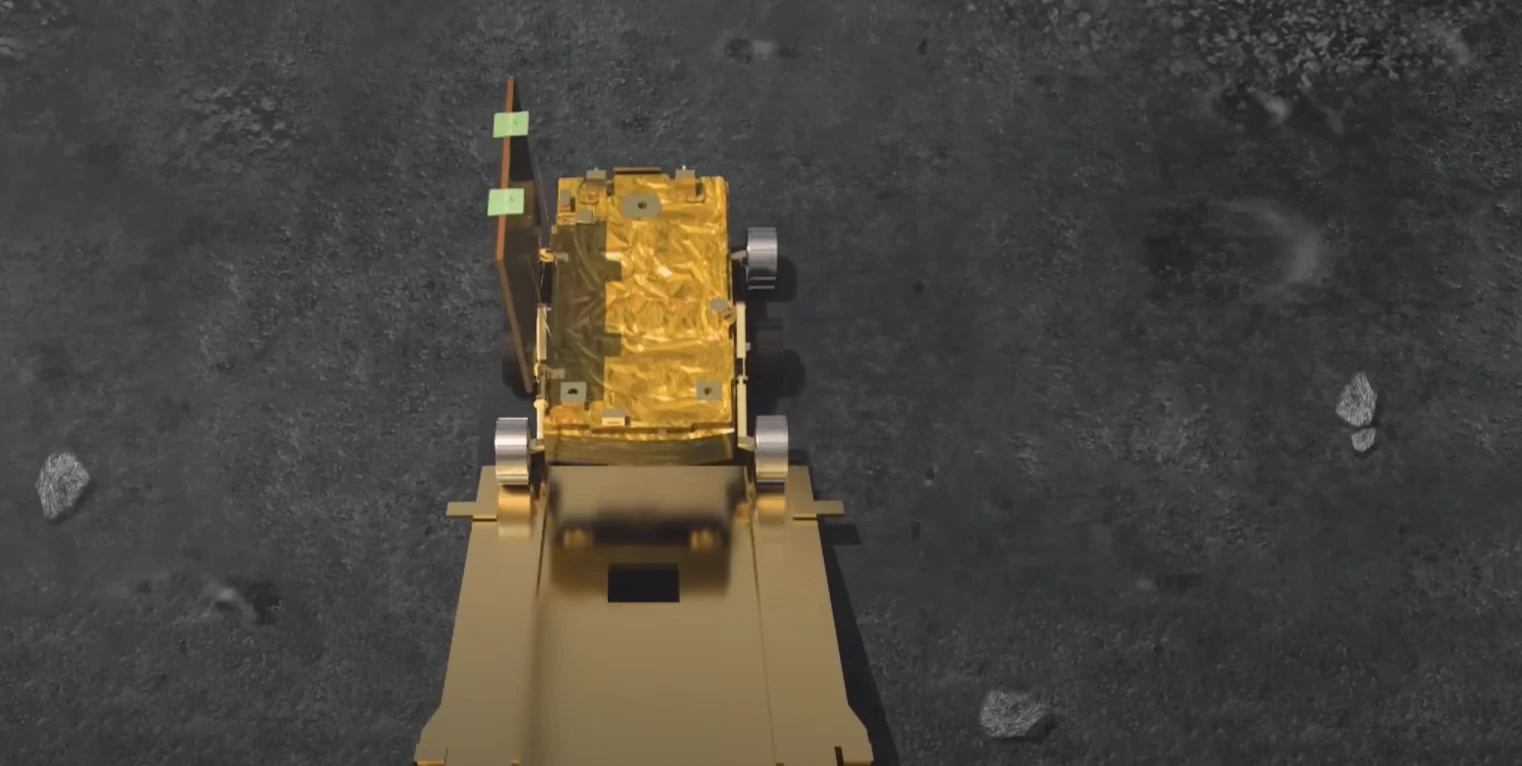
2. Aditya-L1
In a significant scientific stride, the Indian Space Research Organisation (ISRO) launched Aditya-L1 on September 2 at around 11:50 am. The spacecraft initiated its journey with a PSLV-XL rocket from the Second Launch Pad at the Satish Dhawan Space Centre (SDSC). This mission, also known as PSLV-C57, marked the 59th flight of the Polar Satellite Launch Vehicle (PSLV).

Unraveling Solar Mysteries
Aditya-L1’s mission is a complex endeavor with multiple phases as it ventures towards the Sun. The spacecraft’s final destination is a halo orbit around Lagrange point 1 (L1), positioned 1.5 million kilometers from Earth. This distance is just one percent of the vast expanse between the Sun and the Earth, amounting to 150 million kilometers. Consequently, Aditya-L1 will position itself approximately 148.5 million kilometers away from the Sun.

Lagrange Points: The Perfect Balance
Lagrange points are strategically located in space where gravitational forces from massive bodies achieve equilibrium, allowing spacecraft to conserve energy by utilizing minimal fuel. The equilibrium is a result of gravitational forces from two large bodies being equal to the centripetal force required for a small object to move with those bodies.
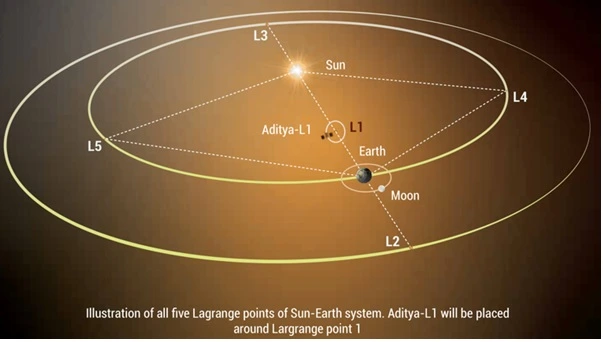
Unique Halo Orbit and Instrument Payloads
Aditya-L1’s halo orbit is a distinctive path, neither circular nor elliptical, but stretched on both sides with a distance of 13 lakh kilometers between the farthest points. The spacecraft boasts seven payloads, categorized into remote sensing and in-situ instruments. The four remote sensing payloads are spectroscopes, while the three in-situ payloads include two particle analyzers and one magnetometer.
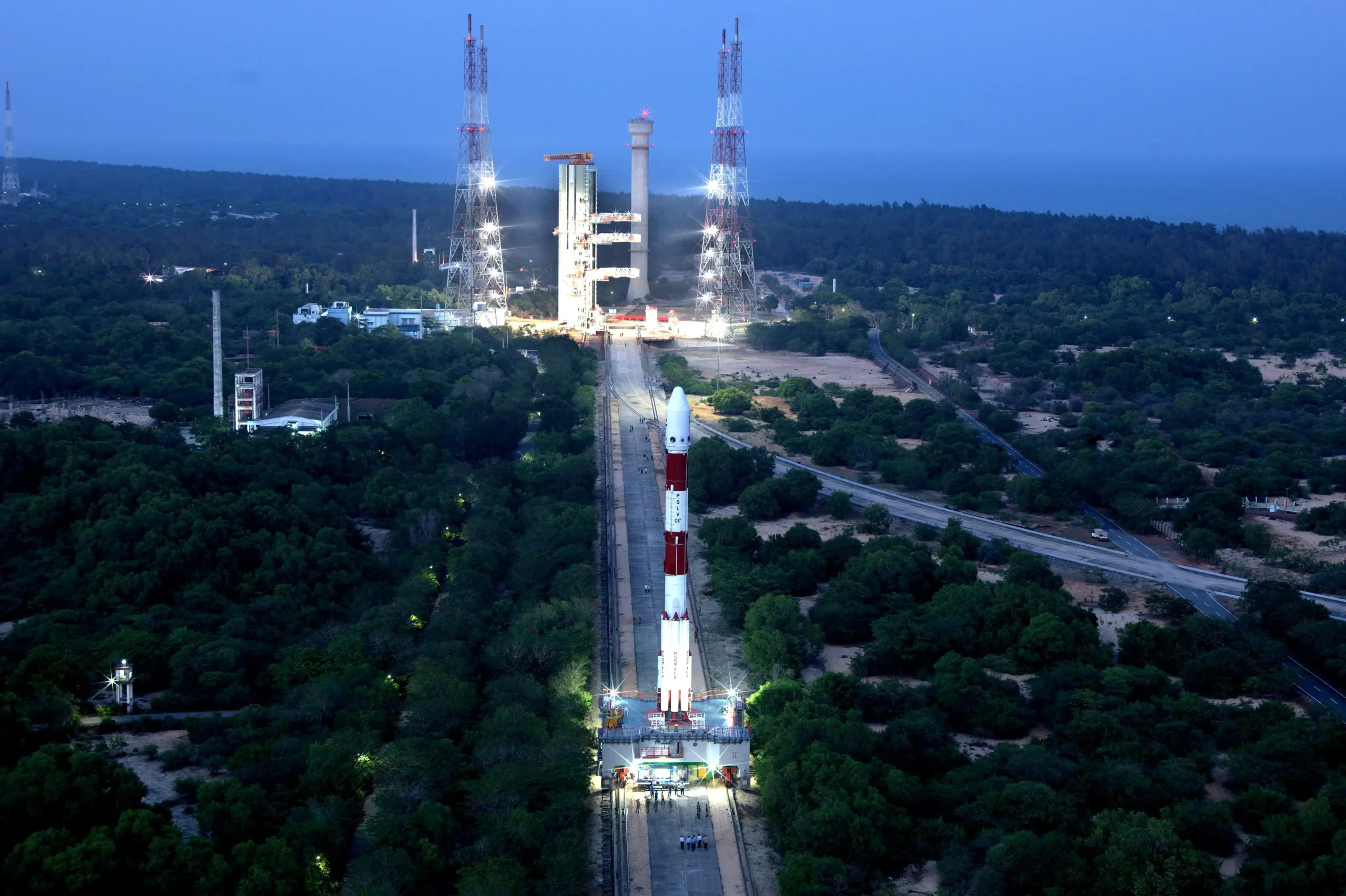
Scientific Inquiry into Solar Phenomena
Aditya-L1 is poised to unravel the mysteries occurring in various layers of the solar atmosphere, explore the dynamics of coronal mass ejections and solar flares, analyze the composition of coronal plasma, monitor real-time effects of solar activities on space weather, measure the energies of solar winds in different directions, and investigate how solar particles impact the interplanetary medium.
As Aditya-L1 embarks on this sunlit odyssey, it holds the promise of advancing our understanding of the Sun, shedding light not only on our solar system’s solitary star but also contributing valuable insights into the nature of other stars within the vast expanse of the Milky Way galaxy.
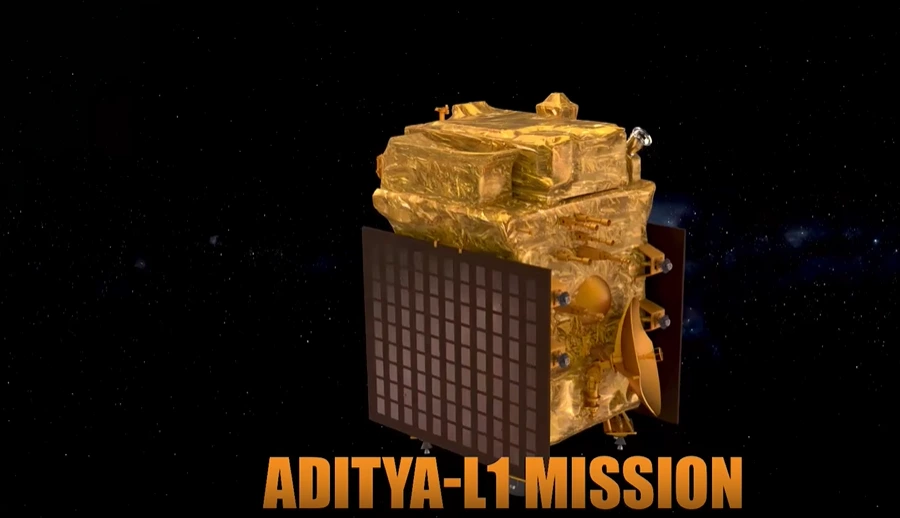
3. Gaganyaan TV-D1
The Indian Space Research Organisation (ISRO) celebrated a major milestone on October 21, 2023, at 10:00 am IST, with the launch of the Test Vehicle Development Flight (TV-D1), the Gaganyaan program’s first unmanned flight mission. This mission, also called the Test Vehicle Abort Flight, took out from the First Launch Pad at the Satish Dhawan Space Centre in Sriharikota, Andhra Pradesh. It included an unmanned Crew Module and a Crew Escape System.
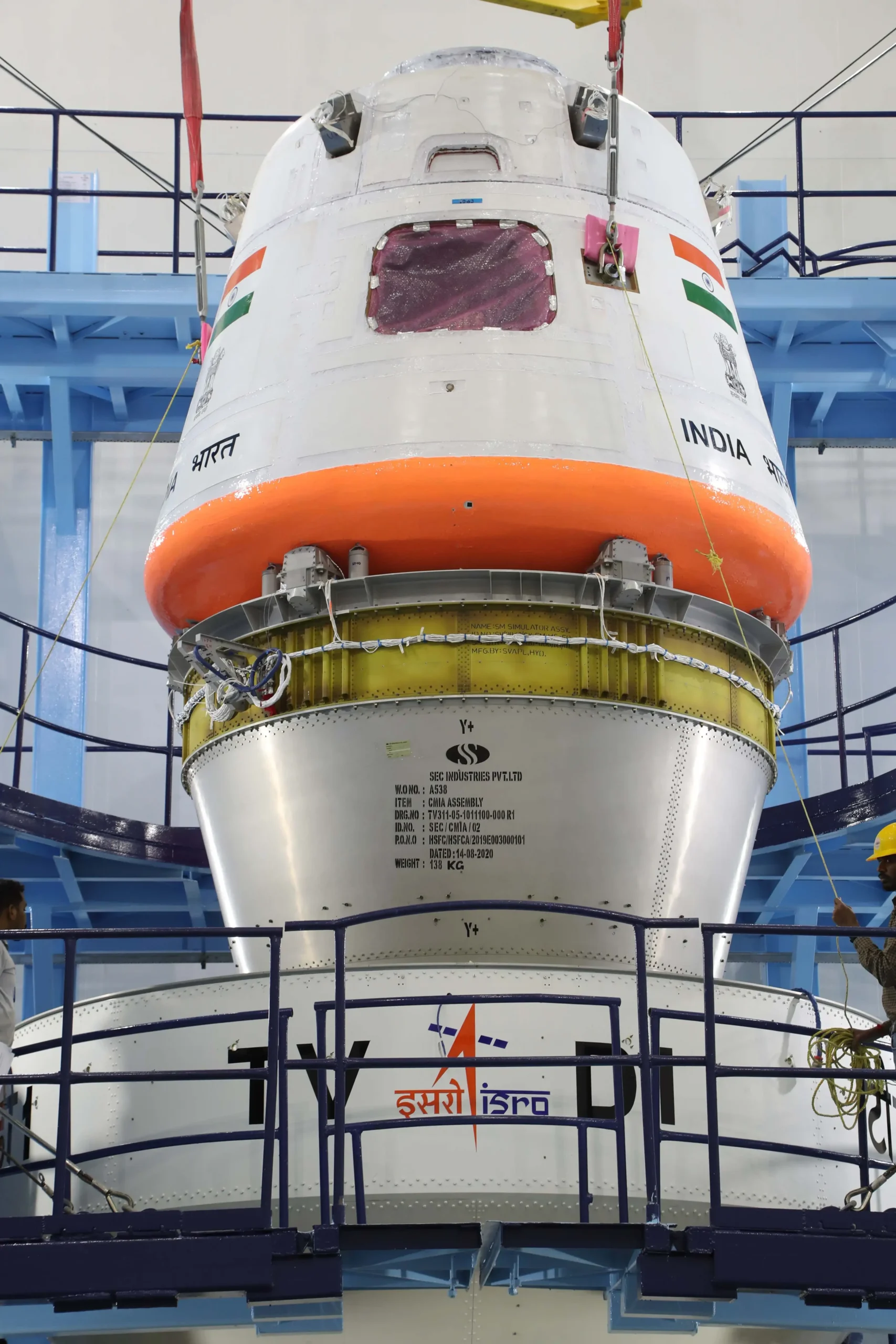
Demonstrating the Crew Escape System
Being the first test flight of the unmanned Gaganyaan, the Gaganyaan TV-D1 mission was critical to demonstrating the functionality of the Crew Escape System. Crew Escape System jettisoning occurred while the Crew Module was still in the air, demonstrating a successful in-flight abort. This important manoeuvre made it possible for ISRO to evaluate particular flight parameters and confirm that the Crew Escape System and Crew Module were successfully separated—an essential step in guaranteeing the astronauts’ safety in the case of an unanticipated incident.
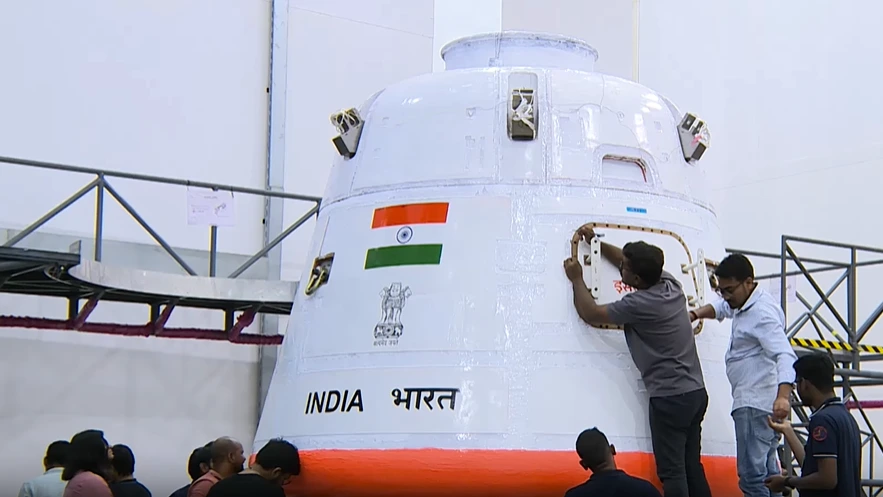
Strategic Abort at Mach Number 1.2
When the Crew Module’s speed hit 1.2 times the speed of sound in air, or Mach number 1.2, ISRO strategically aborted the TV-D1 mission. This phase presented the biggest obstacle, including things like vibration and other important variables. By selecting this particular point for the abort, ISRO hoped to detect and resolve any possible problems that might arise at this critical stage of the mission.
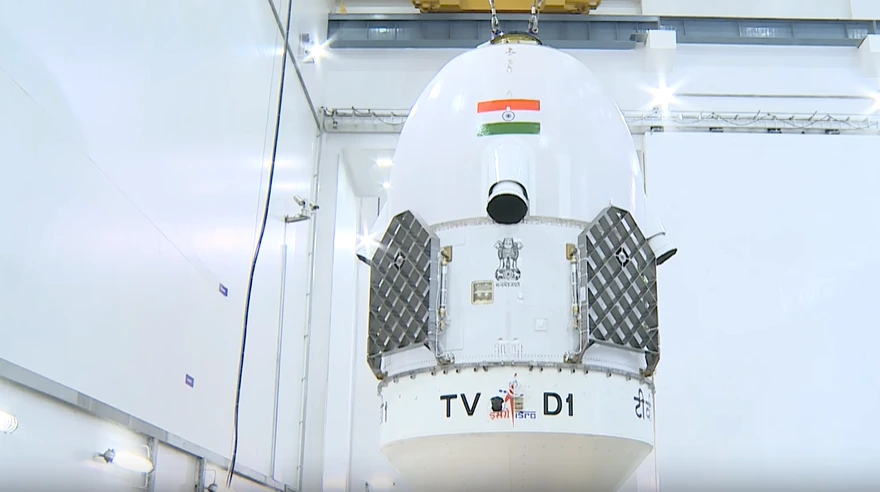
Evaluating Subsystems and Deceleration Systems
As part of the TV-D1 mission, the subsystems of the test vehicle underwent rigorous evaluation. The deceleration systems of the Crew Module were tested at higher altitudes to ensure their functionality and reliability. Notably, an unpressurized Crew Module was utilized for this mission, in contrast to the pressurized crew module slated for crewed Gaganyaan missions. Despite this difference, both versions share identical mass, size, and recovery systems, including complete sets of parachutes.
Preparing for Crewed Gaganyaan Flights
In the upcoming crewed flight tests of the Gaganyaan program, conditions simulating Earth-like atmospheric pressure will be replicated. The successful splashdown of the Crew Module in the Bay of Bengal represents a crucial step forward in ISRO’s pursuit of crewed space exploration and reinforces India’s growing presence in the realm of human spaceflight.
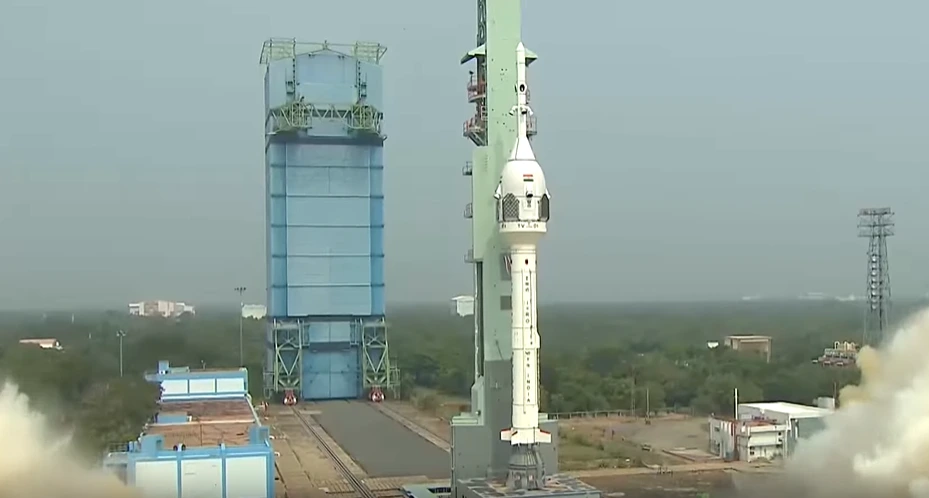
4. PSLV-C55
On April 22, the Indian Space Research Organisation (ISRO) orchestrated the launch of two Singaporean satellites in a remarkable feat known as the PSLV-C55 mission. Serving as the primary satellite, TeLEOS-2 took center stage, rendering the mission its distinctive title, the TeLEOS-2 mission.
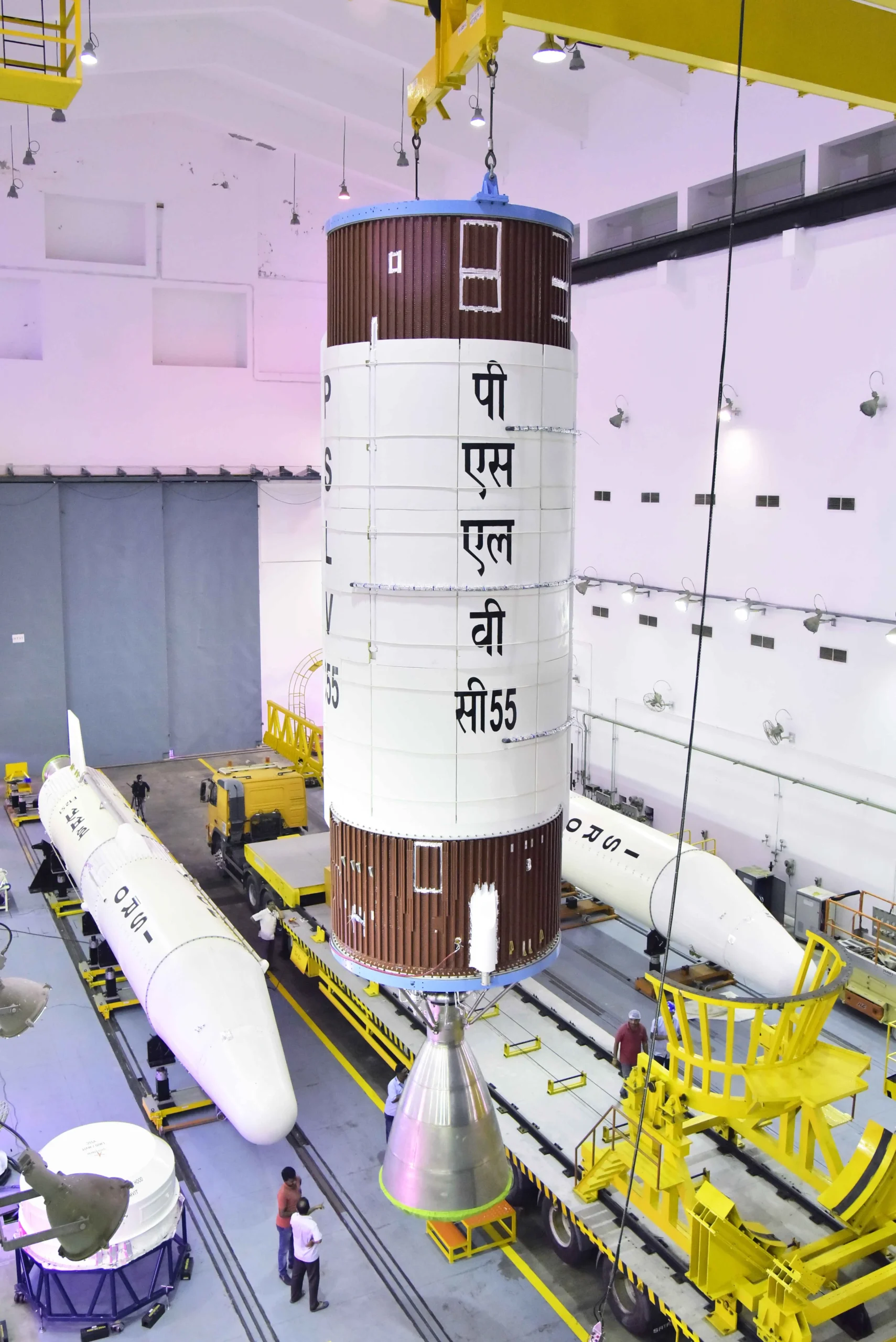
Precision with PSLV-C55
Executed by the polar satellite launch vehicle (PSLV), the PSLV-C55 mission lifted off from the Satish Dhawan Space Centre at 2:19, propelling TeLEOS-2 and Lumelite-4 into space. TeLEOS-2, the primary payload, was accompanied by Lumelite-4, launched as a co-passenger satellite.
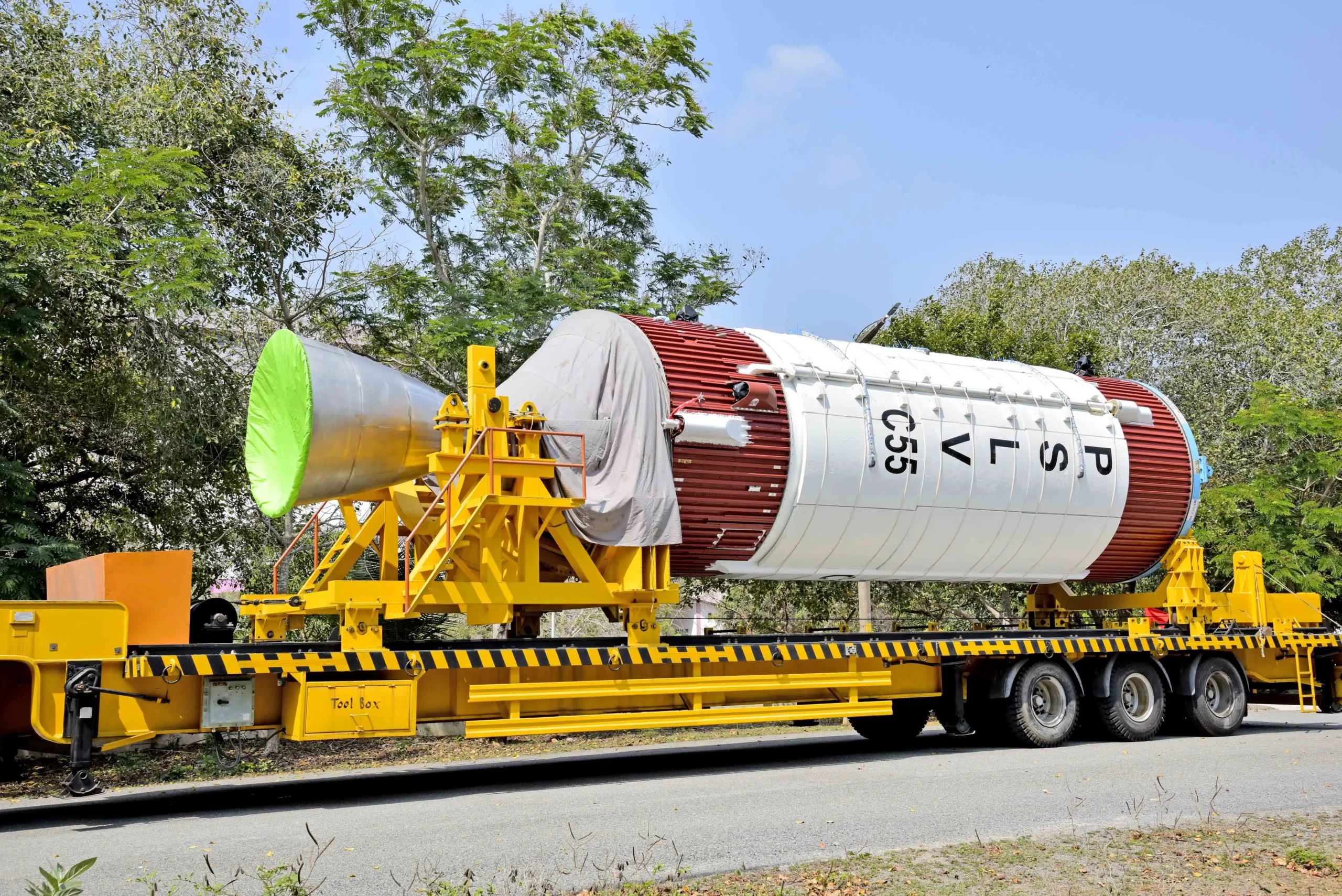
Singapore’s Orbital Residents
Both satellites, TeLEOS-2 and Lumelite-4, tipping the scales at 741 kilograms and 16 kilograms respectively, hail from Singapore. They have been strategically positioned in an eastward low-inclination orbit, paving the way for a multitude of potential applications and contributions in the realm of space exploration. As orbital residents, these satellites signify the collaborative efforts between ISRO and Singapore in advancing technological frontiers and fostering international cooperation in space endeavors.
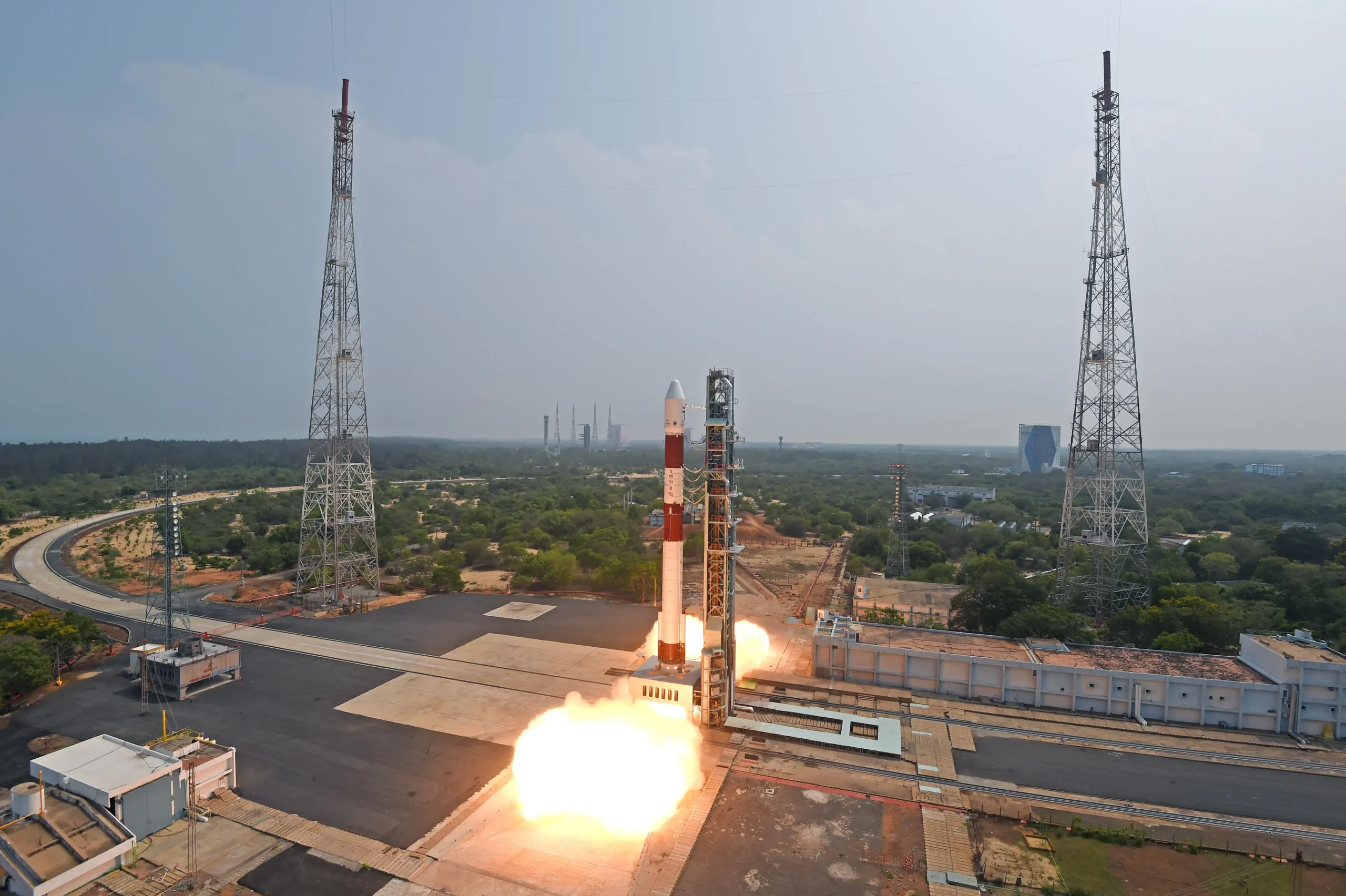
5. SSLV-D2
On February 10, at approximately 9:18 am, the Indian Space Research Organisation (ISRO) achieved a significant milestone with the launch of the second developmental flight of the Small Satellite Launch Vehicle (SSLV). Renowned as ISRO’s smallest launch vehicle, this mission, named SSLV-D2 or EOS-07, soared from the First Launch Pad at the Satish Dhawan Space Centre.
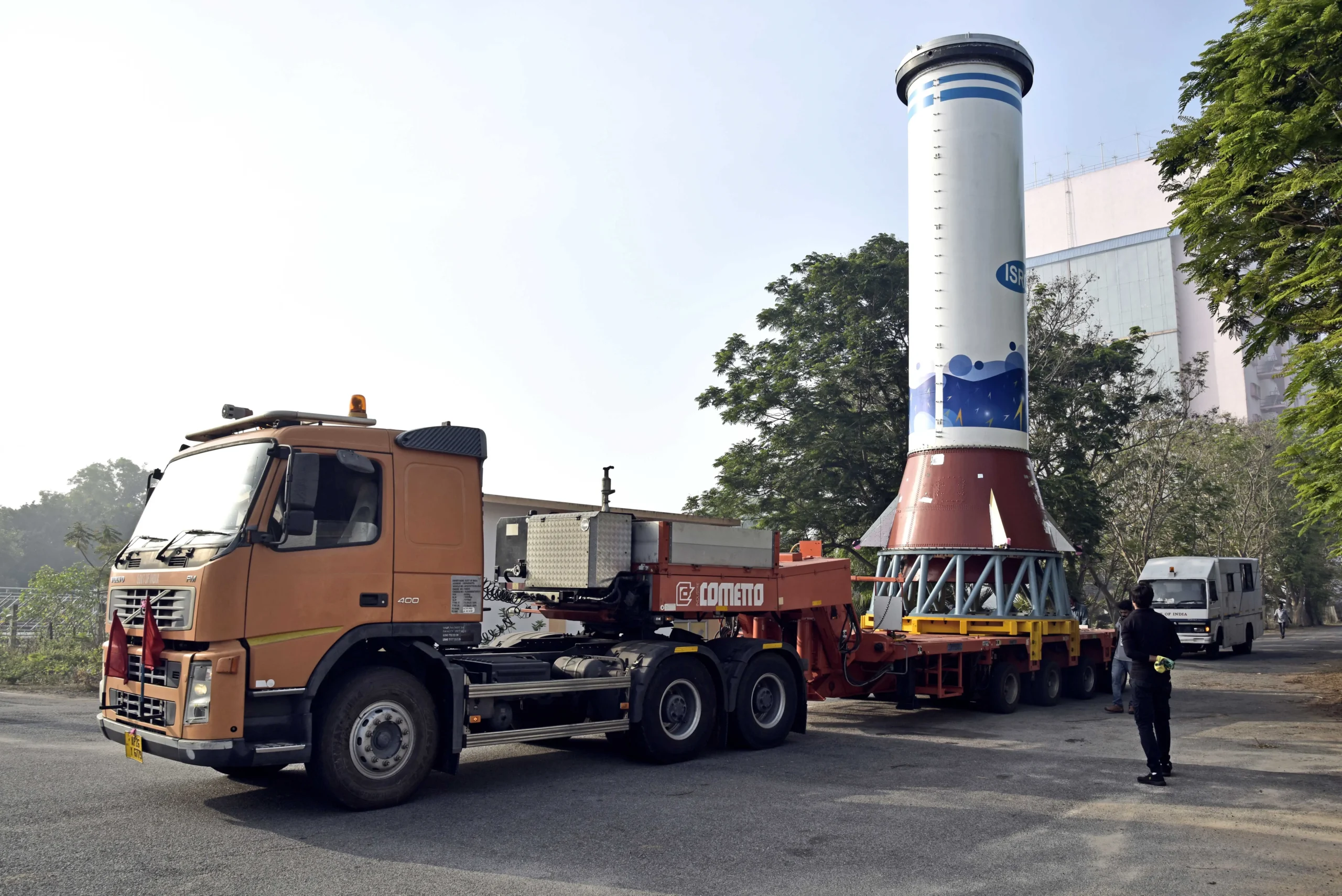
Learning from the Past: SSLV-D1
The journey of SSLV began with its maiden mission, SSLV-D1, launched on August 7, 2022. Unfortunately, the inaugural flight encountered challenges and failed to place its payloads into the intended orbit. SSLV-D1 aimed to establish a 356-kilometre circular orbit for two satellites. In contrast, SSLV-D2, with its 15-minute flight, successfully placed Earth Observation Satellite-07 (EOS-07), Janus-1, and AzaadiSAT-2 into a 450-kilometre orbit, showcasing the resilience and adaptability of ISRO’s small satellite launch capabilities.

ISRO’s Evolution in Launch Vehicles
Over the years, ISRO has made significant strides in launch vehicle technology, realizing five generations of launch vehicles:
- Satellite Launch Vehicle-3 (SLV-3)
- Augmented Satellite Launch Vehicle (ASLV)
- Polar Satellite Launch Vehicle (PSLV)
- Geosynchronous Satellite Launch Vehicle (GSLV)
- GSLV Mark III
These generations have not only addressed national developmental needs but have also enabled ISRO to master critical technologies associated with solid, liquid, and cryogenic propulsion systems. SSLV represents a strategic response to the evolving demands of the global small satellite launch services market, showcasing ISRO’s commitment to innovation and competitiveness on the international stage. As ISRO continues to expand its launch capabilities, SSLV stands as a testament to its adaptability and pursuit of excellence in space exploration.
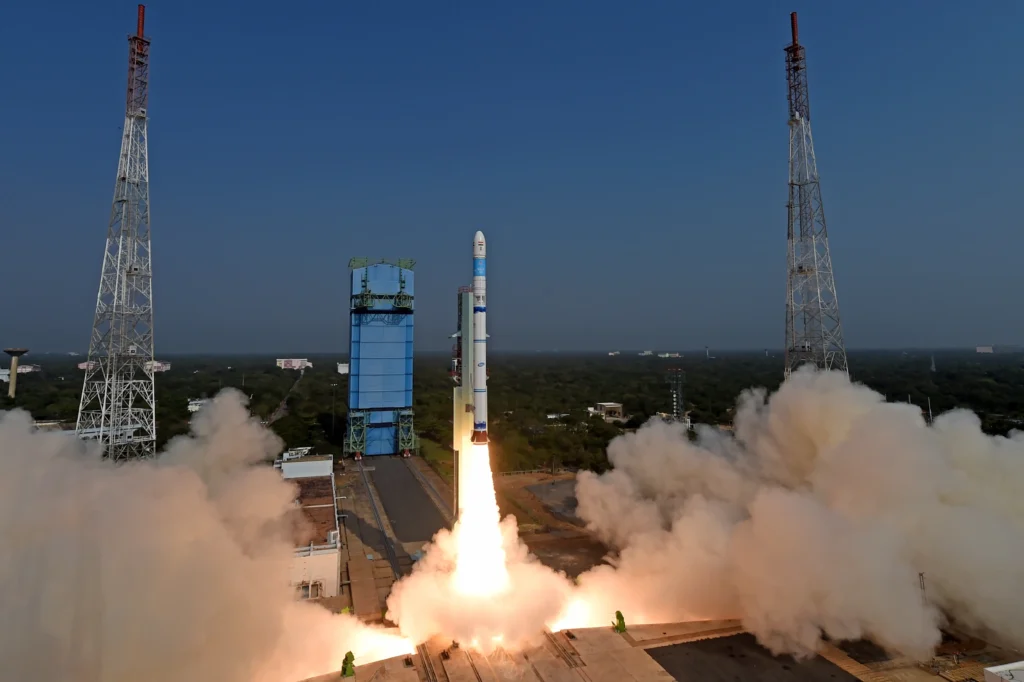
6. GSLV-F12
On May 29, at 10:42 am, the Indian Space Research Organisation (ISRO) added a significant achievement to its repertoire by successfully launching India’s first second-generation satellite. Named NVS-01, this groundbreaking satellite embarked on its journey atop ISRO’s Geosynchronous Satellite Launch Vehicle (GSLV-F12) from the Second Launch Pad at the Satish Dhawan Space Centre.
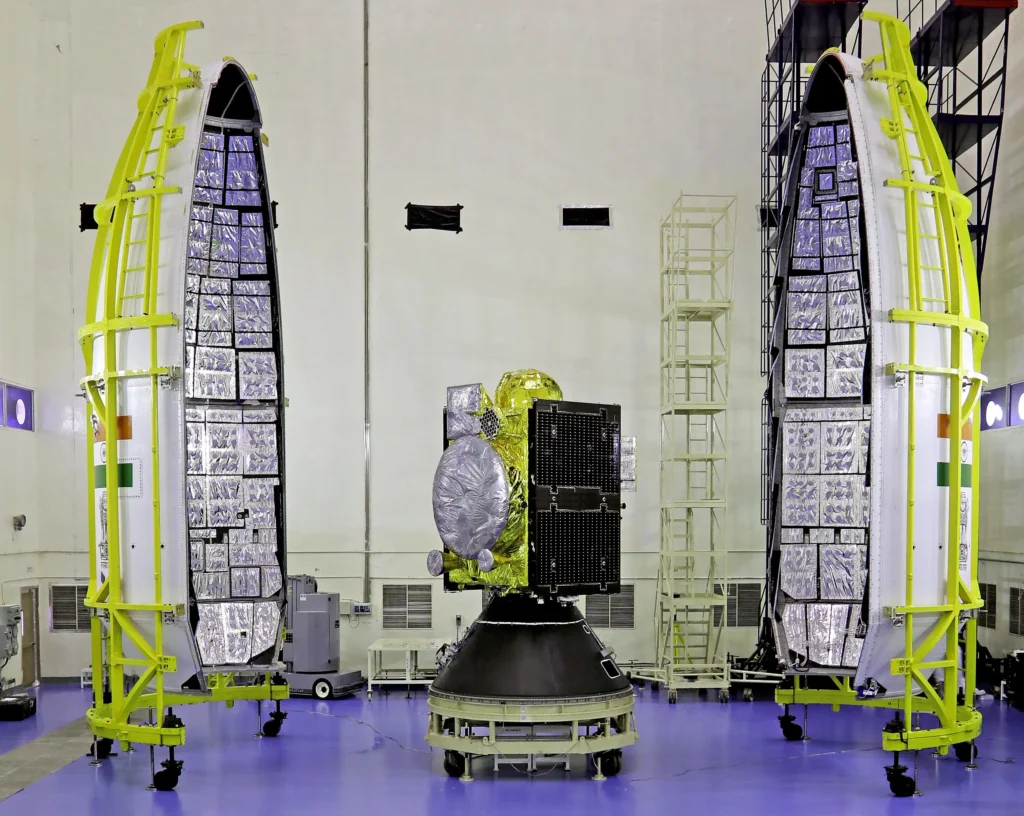
GSLV-F12: Propelling India’s Navigation Ambitions
The Geosynchronous Satellite Launch Vehicle, GSLV-F12, served as the launch vehicle for this historic mission, lifting NVS-01 into the expanse of space with precision and efficiency.
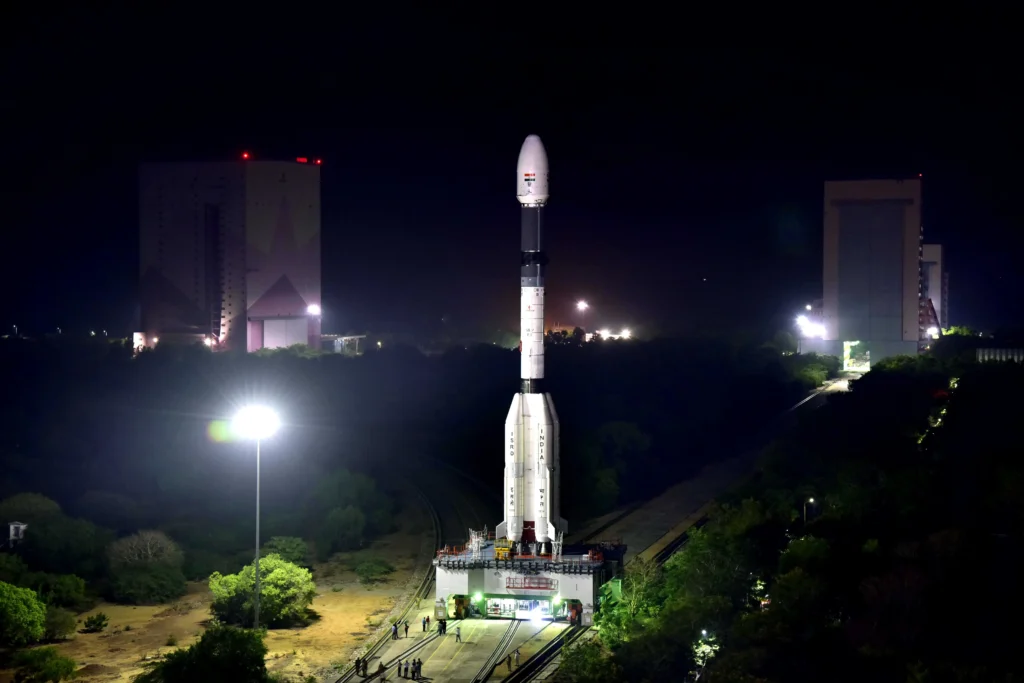
NVS-01: Advancing Navigation Capabilities
NVS-01 is a navigation satellite that will play a crucial role in augmenting India’s Navigation with Indian Constellation services. Weighing approximately 2,232 kilograms, this state-of-the-art satellite is equipped with an indigenous atomic clock, showcasing India’s capability to integrate advanced technology into space exploration.
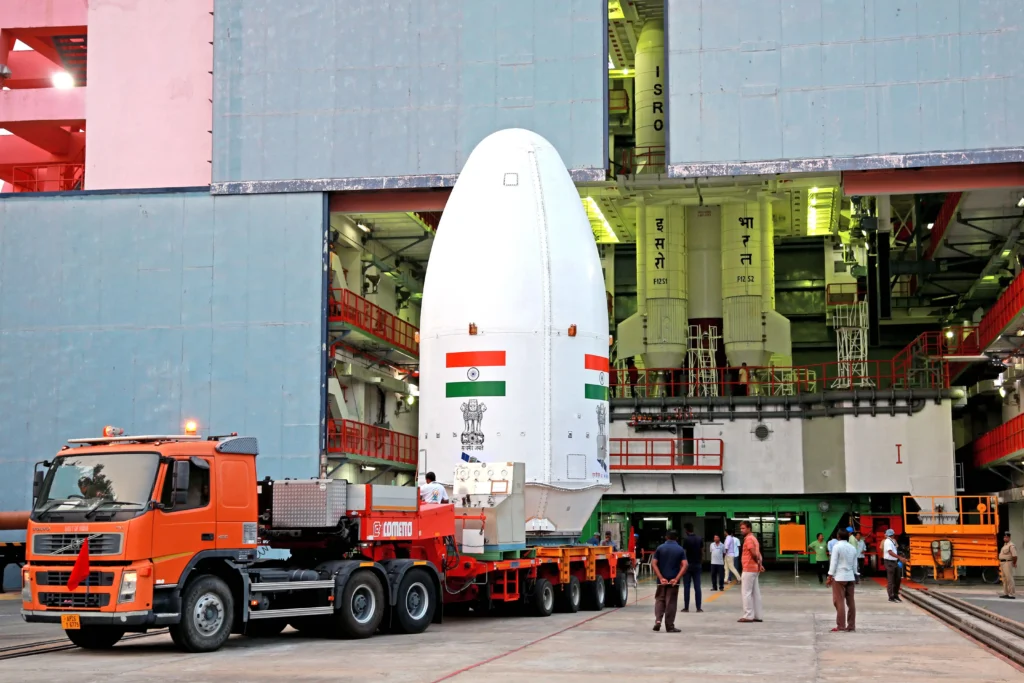
The launch marked a significant moment as NVS-01 was precisely injected into a Geosynchronous Transfer Orbit after a flight duration of about 19 minutes. This achievement not only solidifies India’s position in space navigation technology but also marks a step forward in the evolution of satellite capabilities, demonstrating ISRO’s commitment to pushing the boundaries of space exploration and technology.


